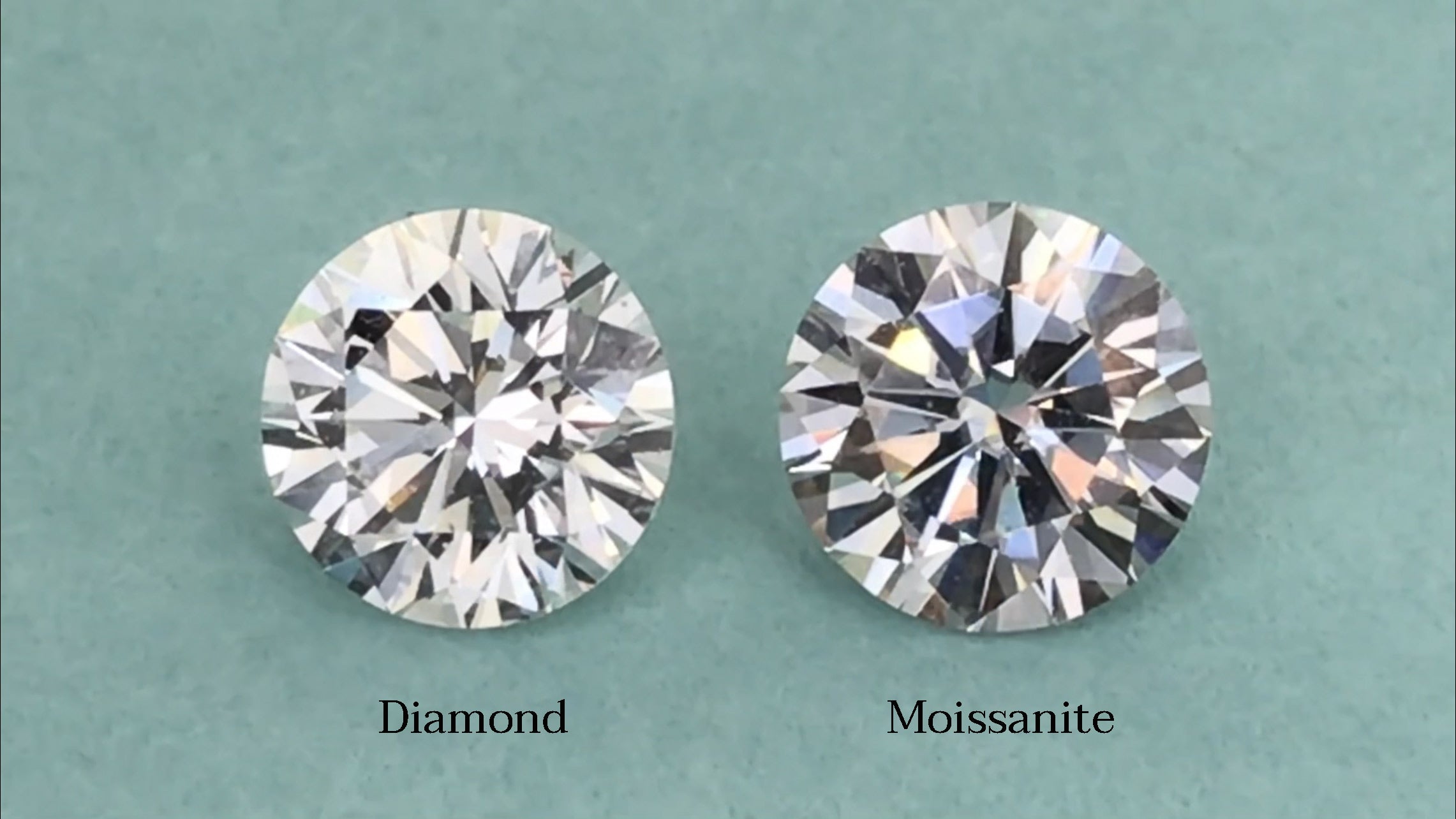Lab Diamond vs. Moissanite: Which Should You Choose?

Should your sparkle come from a lab instead of a mine? Many people today are choosing to avoid the environmental impact of mined diamonds and pledge their love with something more sustainable.
Are you curious about the lab-grown alternatives to mined diamonds? Modern technology has created beautiful alternatives, some that look identical and others that aren’t quite the same.
The only difference between ordinary mined diamonds and lab-grown diamonds is how and where they formed and, of course, how much they cost. Imitations like moissanite have different properties than diamonds and lab created diamonds.
Below we break down the properties and advantages of each so you can choose what’s right for you.
Diamonds vs Lab-Grown Diamonds
As you can see from the chart above, there aren't any significant optical, physical or chemical differences between mined diamonds and lab-created diamonds. The only differences are where they form and how much they cost.
Mined diamonds formed naturally deep in the earth a billion or more years ago and rose to the surface in volcanic eruptions. To be used in jewelry, they must be mined. Most diamonds are mined in enormous open pit operations: an average of 250 tons of earth must be moved to find a single carat of diamond. Mines require billions of dollars in investment: they are often in remote areas so all the roads, housing, and other infrastructure must be built from scratch.
In contrast, lab created diamond crystals are grown in high-tech machinery in a few weeks. In the HPHT process, diamonds are grown on a diamond seed at the same high pressure and temperature found deep in the earth. In the CVD process, methane and hydrogen are heated to form a white-hot plasma which then deposits carbon, atom by atom on a diamond seed.
Laboratory-grown diamonds are a true technological achievement. When you consider the extreme conditions in which diamond formed deep within the earth a billion or more years ago, it’s impressive that scientists have found a way to grow diamonds at the earth’s surface.
Although growing diamonds in a lab requires high-tech equipment, energy, and expertise, it is less expensive than mining diamonds. That’s why lab diamonds are more affordable. You can expect to pay about 35-50% less for a lab created diamond of the same size and quality that looks identical to an ordinary mined stone.

Moissanite: A Popular Diamond Imitation
The crystallized form of silicon carbide, lab-grown moissanite is a popular imitation of diamond, or diamond simulant. It has excellent, durability, brilliance and dispersion. If you are looking for an attractive lab-grown gemstone, it is a good choice.
But moissanite has a different appearance than diamond. You can tell the difference just by the way it looks. You can see the difference yourself in the video above. Diamond, on the left, reflects more white light back to the eye as brilliance. Moissanite is darker and reflects more colored light than diamond. This "disco ball" effect lets you know it's not diamond.
Moissanite handles light differently than diamond in another way. It is doubly refractive so the facets that you see through the table are doubled, an optical effect that can make them look a little blurry. Because moissanite bends light differently, it is cut with different proportions and different facet patterns.
Moissanite also usually has more body color than diamond. Even the best premium moissanite is only near colorless and most is tinted with a faint gray or green hue. This can make moissanite look darker than diamond when you place them side-by-side.
Moissanite generally isn’t graded by major labs so you may want to choose a branded version to make sure that you receive a good quality stone. Pricing for moissanite varies a lot, from less than $100 per carat to $600 per carat for branded moissanite.
Moissanite is a good choice for fun fashion jewelry because of its dramatic rainbow sparkles. But if you are looking for classic diamond jewelry styles that last like stud earrings, solitaire necklaces or engagement rings, diamond, either mined or lab grown, will have the classic look that has made it the most coveted gemstone on earth.
Learn more about different kinds of diamonds with our Lab Diamond vs Moissanite vs Cubic Zirconia blog.
Shop all of Brilliant Carbon's beautiful lab-grown jewelry and engagement rings.


